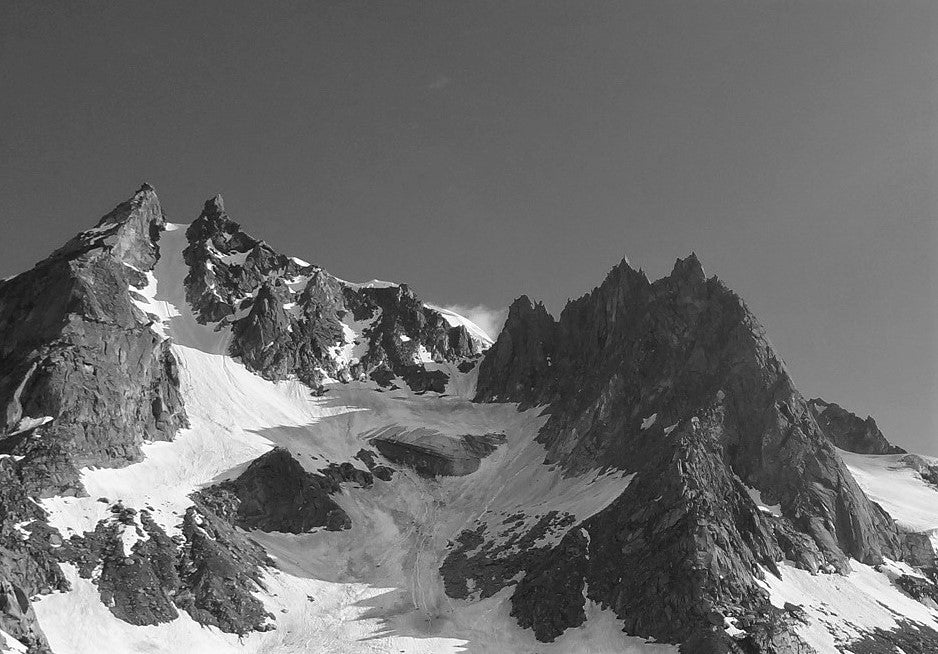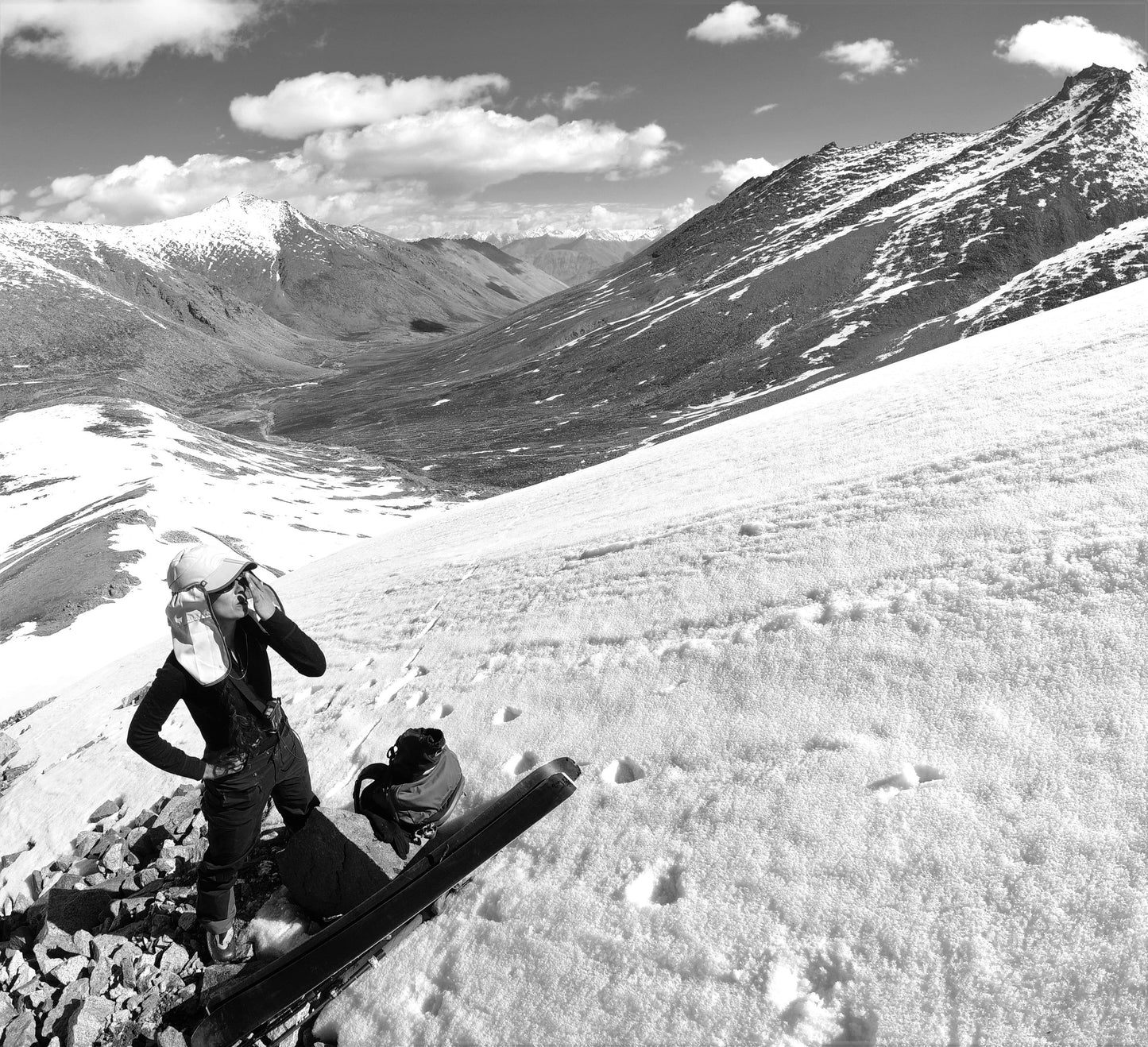Himalayan Alpinism I - Intro to Mountaineering
Himalayan Alpinism I - Intro to Mountaineering
A comprehensive 10-day mountaineering program designed to equip you with essential skills for safe mountain travel, including navigation, technical climbing, and hazard assessment.
Includes
Includes
- Technical equipment
- Camping equipment
- Transport during course
- All meals
- Training and Instruction fee
Pre-requisites
Pre-requisites
Good general physical fitness
Medical Fitness
If you have any health-related concerns , please download the Medical Statement form which goes over a medical checklist. If you answer “yes” to any of the questions there, please get medical clearance from your doctor prior to reaching Keylong. You will need one separate clearance for every question to which you answer “yes.”
Couldn't load pickup availability






Ascend to greater heights with our beginner-friendly Mountaineering Program.
Our introductory mountaineering courses are expertly crafted to push your boundaries while equipping you with the essential skills to navigate safely through challenging environments. Through immersive field training and carefully calibrated student-to-instructor ratios, our programs ensure a steep learning curve. We meticulously select prime locations tailored to each course's unique requirements, guaranteeing an optimal learning experience.
Course Details
Max Ratio - 5:1 or 10:2 (Students:Guides)
Capacity - 10

Mountaineering 101
- Boots and Crampons: Hands on primer
- Ice Axes: Techniques and methods
- Rope Skills: Learn basic rope systems, knots, hitches, and their practical applications.
- Anchor Systems: Gain insight into protection mechanics, anchor setup, and cleaning techniques.
- Climbing Techniques: Master belaying, multi-pitch top rope climbing, and simulated lead climbing.
- Friction Devices: Introduction to mechanical friction devices and their usage in mountaineering.

Planning and Navigation
- Beta Gathering: Gather project information for effective planning.
- Map Proficiency: Master map reading skills.
- Navigation: Digital and traditional
- Gear Selection and Procurement: Optimize gear choices and acquire necessary equipment.
- Logistical Framework Setup: Establish efficient equipment setup and logistical plans.
- Himalayan Backpacking Review: Comprehensive examination of weight management, staging and altitude management.
- Nutrition Planning: Plan optimal nutrition, understand macros, and employ effective cooking techniques.
- Hydration Strategies: Implement best practices for staying hydrated during expeditions.
- Observation Logging and Reporting: Document observations and construct detailed reports for analysis.

Camping and Movement
- Campsite Establishment: Master site selection and campsite setup techniques.
- Operational Efficiency: Improve task delegation and optimize personal chore timing for increased productivity.
- Clothing and Layering
- Terrain Traversal: Navigate various terrains including meadows, scree, glacial moraine, rock, snow, and ice.
- Leave No Trace Principles: Embrace and implement the Leave No Trace philosophy for environmental conservation.

Weather and Hazard assessment
- Telemetric Weather Observation: Develop skills in conducting telemetric weather observations.
- Synoptic Weather Chart Analysis
- Field Weather Assessment: Learn to evaluate weather conditions in the field for risk mitigation.
- Avalanche Fundamentals: Gain insight into avalanche basics, including types and characteristics.
- Avalanche Hazard Establishment: techniques for determining avalanche hazards in mountainous terrain.
- Terrain Management for Avalanches: Understand specific terrain considerations for movement in avalanche terrain.
- Avalanche Search and Rescue Training
Course & Terrain Info
Day 1
- Start with an acclimation short hike, gradually introducing participants to higher altitudes and allowing them to adjust.
- Intro sessions provide comprehensive guidance on equipment essentials, including detailed discussions on selecting appropriate boots and fitting crampons securely. Practical demonstrations on ice axe techniques ensure participants understand proper usage for self-arrest and balance.
- Participants engage in hands-on sessions regarding campsite selection, tent pitching, and efficient gear organization to optimize space and accessibility.
Day 2
- We delve into foundational rope skills, emphasizing the importance of knots, hitches, and their practical applications in securing oneself and teammates during climbs.
- A session on camping and movement focuses on optimizing productivity through task delegation and time management, ensuring efficient camp setup and operations while adhering to Leave No Trace principles.
Day 3
- Building upon previous skills, participants deepen their understanding of anchor systems, exploring various setups and configurations for different terrain types. Detailed instruction covers protection mechanics, anchor placement, and techniques for efficient cleaning to minimize environmental impact.
Day 4
- Participants refine climbing techniques, mastering belaying methods, multi-pitch top rope climbing, and simulated lead climbing scenarios to enhance confidence and proficiency on the rock.
Day 5
- After a mock lead climb for practical application, participants transition to Module 2: Planning and Navigation. This segment covers essential aspects such as beta gathering, map reading proficiency, and strategic gear selection based on anticipated terrain and weather conditions.
Day 6
- Module 4: Weather and Hazard Assessment begins with intensive training in telemetric weather observation techniques, allowing participants to analyze current conditions and anticipate potential hazards.
- Departure to Yunam base involves practical application of navigation skills, as participants navigate varying terrain with confidence and precision.
Day 7
- Participants establish camp 1, applying learned principles of site selection and operational efficiency to create a comfortable and functional living environment.
Day 8
- Transitioning to Yunam summit camp, participants review avalanche fundamentals and terrain management strategies, ensuring safe passage through potentially hazardous areas.
Day 9
- Summit day commences with a comprehensive hazard assessment, applying acquired skills to mitigate risks and ensure a safe ascent. Participants utilize their understanding of avalanche basics and hazard establishment techniques to make informed decisions in challenging conditions.
Day 10
- Following a successful summit, participants return to base, The journey concludes with a drive to Keylong.
Important Info
- Booking Deposit: A 50% deposit is required upon booking.
- The remaining cost will be settled upon your arrival at the location





